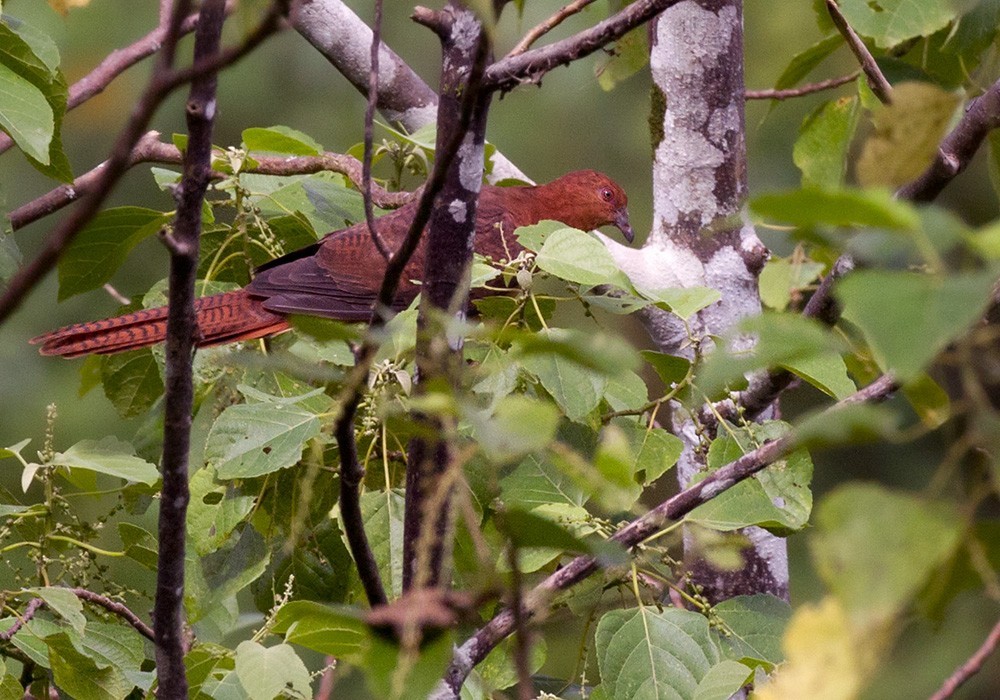Black-billed Cuckoo-dove
A species of Macropygia cuckoo-doves Scientific name : Macropygia nigrirostris Genus : Macropygia cuckoo-doves
Black-billed Cuckoo-dove, A species of Macropygia cuckoo-doves
Botanical name: Macropygia nigrirostris
Genus: Macropygia cuckoo-doves
Content
Description General Info
 Photo By Lars Petersson
Photo By Lars Petersson Description
The bar-tailed cuckoo-dove measures 29 centimetres (11 in) in length. It has a short, completely black bill. The six central tail feathers are black barred. The central breast feathers are not bifurcated. The male is ruddy-brown, with no clear distinction between the underparts and the upperparts. The female, however, has black barred upperparts. The juvenile is similar to the female, but its tail is barred irregularly. It is differentiated from other sympatric (other species existing in the same geographic area and thus frequently encountering with it) pigeons other than cuckoo-doves, by its chestnut brown plumage and slender, long tail. 
Size
30 cm
Nest Placement
Tree
Feeding Habits
Black-billed Cuckoo-dove primarily consume fruits and seeds found in trees, occasionally descending to the ground for water in dry conditions. Their stomachs sometimes contain pebbles, likely ingested to aid digestion.
Habitat
The habitat of black-billed Cuckoo-dove generally includes lowland edges and foothill regrowths, as well as the interior of mountain forests in broader geographical regions like New Guinea. They adapt to environments where fruiting trees abound, as they often feed there either alone, in pairs, or in small groups.
Dite type
Frugivorous
General Info
Feeding Habits
Bird food type

Fruit
Distribution Area
It is native to Papua New Guinea and Indonesia. It inhabits old-growth forests, forest peripheries, and second-growth forests. It also occurs commonly on submontane forests on altitudes of up to 2,600 metres (8,500 ft) from sea levels, and occasionally at sea levels on hills adjacent to coasts. 
Species Status
Since 1988, the bar-tailed cuckoo-dove has been rated as a species of least concern on the IUCN Red List of Endangered Species. This is because it has a very large range—more than 20,000 km (7,700 mi)—and because it has a stable population trend. Also, although its population numbers has not been determined, it is commonly found throughout most of its distribution, it is thought to be above 10,000 which is above the criterion to warrant it a vulnerable rating. There are no substantial threats thought to be to this species. 

 Photo By Lars Petersson
Photo By Lars Petersson Scientific Classification
Phylum
Chordates Class
Birds Order
Pigeons and doves Family
Dove Genus
Macropygia cuckoo-doves Species
Black-billed Cuckoo-dove